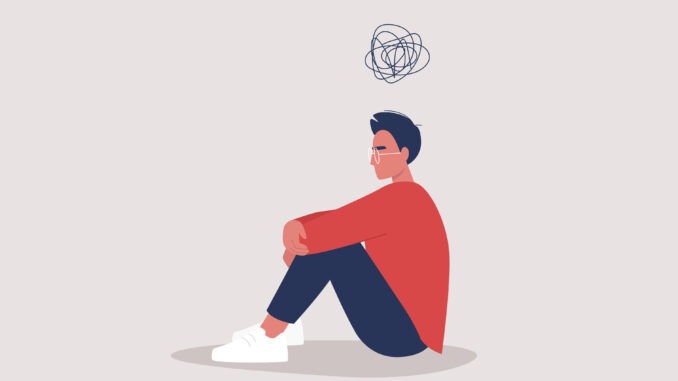
Outdated ideas about eating disorders – and those who experience them – are preventing people from accessing care, say James Downs and George Mycock
CREDIT: This is an edited version of an article that originally appeared on The BMJ
Current treatments for eating disorders can, at best, be described as moderately effective, indicating a gap in our understanding of what works and for who. Just as there is no ‘one-size-fits-all’ eating disorder, there is no one treatment that works well for everyone.
If we want to provide relevant and effective care for eating disorders we need to improve our understanding of the many ways they can present across a diverse range of cultural and social groups. One such group is men and male-identifying patients. As with any group, men will not have a singular, unified experience of eating disorders; nevertheless, they need treatment that considers their distinctive experiences as men, and how these are informed by cultural constructions of male identity and masculinity.
Our own lived experiences as two men with eating disorders have been shaped by societal pressures that encourage and applaud increased levels of muscularity. As research has highlighted, these masculine ideals can lead to life-limiting pursuits and behaviours that include, but are not limited to, excessive and/or compulsive exercise, steroid abuse, restrictive dieting and imbalanced nutrition.
We know first-hand the psychosocial costs that can be incurred when exercise takes priority over socialising, or when self-worth becomes tied up with anxieties about body image. Men experiencing this may present in healthcare with an athletic appearance that hides a multitude of physiological problems – from bradycardia and sexual dysfunction, to the risks of abusing steroids and other performance-enhancing supplements. Yet our society’s, often public, celebration of muscularity-oriented behaviours and, certainly, of muscular physiques in men can limit opportunities for help-seeking in those who struggle privately.
One of us (GM) experienced muscularity-focused preoccupations with shape, compulsive exercise and disordered eating. “These behaviours became my entire life. I skipped social events with family and friends to exercise and force feed. My behaviours were seen as commendable signs of dedication, and my body changes were praised and encouraged. When I finally reached the point to seek help, clinicians questioned whether my behaviours were truly maladaptive because I didn’t ‘look like someone with an eating disorder.’”
Harmful ignorance
Societal ignorance of the potentially harmful side of these behaviours can prevent men from recognising the severity of their problems and seeking help. Furthermore, if help is sought, they are then faced with a general lack of knowledge and training among the medical workforce about eating disorders. Patients need healthcare professionals who not only know the basics about eating disorders, but also understand how they may present differently in people of varying backgrounds, ethnicities, genders and ages. This is fundamental knowledge that can prevent people who are outside stereotypical notions of eating disorders from falling through the net.
Male patients are one group which is too often failed by limited models of diagnosis and treatment for eating disorders, leading to interactions with medical professionals that reflect a lack of recognition of their healthcare needs. During our treatment, we’ve often found that doctors had a very fixed idea of what eating disorders are, who they affect, and what kinds of problems those people might experience. Many times, it’s been clear that they didn’t think we could be one of those people, or that our problems fitted the criteria, even though we were very unwell.
One of us (JD) “once had a GP praise me for looking toned—when I had come to an appointment to ask for help with compulsive exercise and my eating problems. Another doctor once joked that I ‘could do with more bulking, and less shredding’ during an emergency admission.”
Even specialist treatment settings can often leave male patients feeling excluded, alongside other groups which are not well-represented in eating disorder services, because of a lack of visibility of other people with similar experiences and backgrounds. Clinical environments can be perceived as feminised – from the decorative elements and choices of colours, to patient information that emphasises the physical changes eating disorders can cause in female bodies but not in male bodies. These environmental cues have essentially told us, ‘This space is not for you’.
Listening to patients’ lived experiences is always a good place to start and, in our examples, it’s clear how some men experiencing similar problems may think they have nowhere to go for the healthcare they need. This leaves many at considerable risk of further physical health complications, increased psychological distress and reduced chances of recovery in the future.
A multi-dimensional approach
In order to change this, we need a multi-dimensional approach, with the following three areas key priorities:
- Firstly, we need to keep working to broaden societal understanding of the whole range of eating difficulties that might be experienced by people of any background.
- Secondly, medical professionals need adequate training in eating disorders. Eating disorders account for nearly one-in-10 people with a mental health condition, so all doctors must consider them as relevant to their work. Medics also need to be aware of how eating disorders of all kinds can affect the body across multiple systems and recognise that they do not occur in a vacuum, or in isolation from the rest of patients’ lives; in each individual, they may manifest slightly differently.
- Lastly, we need to reconsider the current diagnostic criteria for eating disorders, interrogating whether they, firstly, reflect changing trends in symptomatology in an inclusive way and, secondly, are useful in facilitating healthcare for patients experiencing problems related directly to food, eating, weight, shape and exercise, including men.
Sticking to the status quo is simply not working well enough; our ways of understanding, diagnosing and treating eating disorders are limited and outdated. This needs to change so that all patients with eating disorders – including men like us – receive the care that we need.


Be the first to comment